Scientists of the world unite!
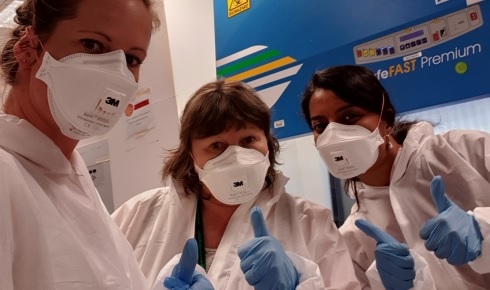
Since the pandemic began Tom Ireland has been talking to bioscientists from around the world who have sprung into action to help to understand, track and treat COVID-19
June 5th 2020
In early March, as the number of confirmed cases of COVID-19 started to grow rapidly in the UK, Professor Paul Freemont FRSB gathered his team at the London Biofoundry, a synthetic biology research and technology centre within Imperial College. Long before the Government had issued a UK-wide call for support from science laboratories, the team brainstormed how their robotic platforms and automation expertise could help support COVID-19 testing on a mass scale.
Just a week later they had repurposed, rehoused and tested their robotic platform in an NHS diagnostic unit at St Mary’s Hospital, and were running hundreds of tests for COVID-19 per day. Within three weeks a second robotic testing platform was set up at Charing Cross Hospital and Freemont was in discussions with Public Health England to set up larger versions in other locations that could perform 4,000 tests per day.
It’s just one of the many remarkable stories that I heard amid the blur of catastrophic news and strange virtual meetings that dominated this spring. In a series of ‘COVID Q&As’ I found that in those crucial weeks at the start of the crisis, researchers across many disciplines of the life sciences – both in academia and industry – spontaneously formed groups to discuss how they could help. This was often done amid the logistical chaos of shutting down offices and laboratories, relocating staff for home working, shuttering research programmes and setting up virtual teaching.
“Before the shutdown I set up a Slack channel and emailed colleagues, and very quickly we got 850 researchers,” says Cambridge biophysicist Professor Pietro Cicuta. “It’s worked really well for a bottom-up, grassroots place for sharing ideas. Now we have about 20 to 30 channels for different things, from engineering ventilators to volunteering, and other collaborators from around the Cambridge area have joined.”
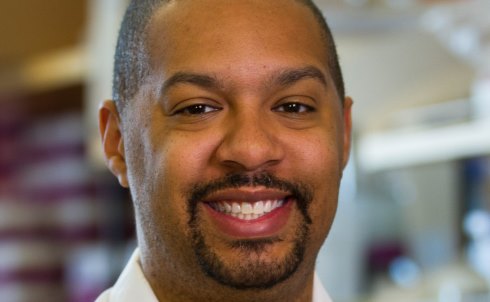 “More people are running towards the fire than running away from it” - microbiologist Michael D L Johnson
“More people are running towards the fire than running away from it” - microbiologist Michael D L JohnsonClinician scientists at the Francis Crick Institute, Europe’s largest biomedical testing facility, realised in early March that there was an urgent need for more testing for staff and patients in the NHS system.
In two weeks, working with partners at University College London Hospitals NHS Foundation Trust, they started to test staff from nearby hospitals, eventually repurposing the entire site for COVID-19 research and diagnostics.
These remarkable logistical and scientific achievements seem to have been possible for several reasons. The first is that researchers have volunteered to work long hours and lend expertise in huge numbers wherever possible. “More people are running towards the fire than running away from it,” as US microbiologist Michael D L Johnson puts it.
“The collaborative spirit is extraordinary and unprecedented,” says Bristol-based synthetic biologist Imre Berger FRSB. He is part of a group of 40 scientists, including clinicians, biologists, chemists, epidemiologists, virologists, engineers, administrators, lawyers and public health experts, who e-meet daily to work on “rapid solutions to otherwise insuperable problems and generate new ideas… which are taken forward almost on a daily basis”.
A second key factor in the rapidity of response has been the flexibility and innovation shown by those that support the sciences, from funders and administrators to equipment and reagent suppliers. Processes that would normally take weeks have been sped up and red tape has been lifted where possible. I heard of multi-million pound grants awarded in 24 hours, and suppliers sending equipment first and working out payment and paperwork later.
A third theme has been the speed at which data has been made available for teams to work with. US virologist and disease outbreak specialist Dr Angela Rasmussen says that data has come out at a different speed and scale to anything she has seen in her career before, which includes the response to Ebola and Zika outbreaks. “One reason is widespread and affordable sequencing, and the other is the existence of pre-print servers. Thousands of viral genomes have been uploaded to online strain databases and pre-prints are coming out so fast that I can’t keep up with all of them.”
This unprecedented deluge of information and data has allowed many groups around the world to use other groups’ findings or data almost as they are produced. Groups have had to quickly develop new ways to sort through all the information being shared and to ensure their work is seen by those who need it.
For example, the London School of Hygiene and Tropical Medicine (LSHTM) is using master’s students to triage case reports. They have also developed an in-house peer-review system to vet data before they put it into open repositories.
“We realised that if we are sort of bypassing peer review in the short term, we want to make sure you are at least double-checking the work before it goes out,” says Dr Adam Kucharski, an associate professor at the LSHTM who is modelling many aspects of the outbreak. “The idea here is not to do a paper that will define the field for the years to come. It’s getting something that’s immediately useful and available, with the knowledge that you’re going to have to refine it over time.”
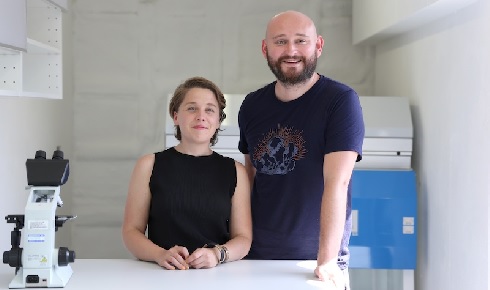 Open Cell co-founders Thomas Meany and Helene Steiner developed a mobile
Open Cell co-founders Thomas Meany and Helene Steiner developed a mobileCOVID-19 lab for use in shipping containers
Crisis science
For many, this is a positive change to a more open and modern way of sharing research outputs than the traditional journal model. Thomas Meany, co-founder of the Open Cell laboratory space in West London, used a draft Google Doc from a lab at Penn State University as a starting point for developing their own high-throughput COVID-19 screening system.
“The authors were all still writing the paper, but they decided to make it public,” says Meany. “That allows us to say: ‘Okay, the Salis Lab are doing this, we know that x, y and z hasn’t been properly assessed, but we as a lab can take that up now and begin to critique that rigorously in our own experimentation.’
“I think that can really accelerate things. Now we can just update Google Docs on the fly and another laboratory can publish an addendum as quickly as it takes to write on a screen; it’s really almost like ‘crowd-science’. That’s just one thing I’ve been very excited about.”
This new world of crisis science is concerning others, however. Amid the deluge of information, and with relaxed or non-existent peer review, poor-quality studies, press releases and government briefings are being used in other studies or reported as if they were fact. This could lead to potentially harmful public policy decisions, says Dr Rasmussen. “I don’t want this information not to come out – but it needs to be interpreted very carefully within context. We can’t make assumptions, for example, that people are having reactivations of their viral infections because we don’t have any good data that says that they do.”
Others have concerns beyond the current short-term crisis to what comes next. As early as April there was talk of institutions planning large-scale cuts to survive, and there will be an entire generation
of PhD and postdoc students who have holes in their experiments and, possibly, their careers. The job insecurity, the constant virtual meetings, and the sudden change to working at home with families to support are causing exhaustion and stress. Research based on charity funding has taken a big hit.
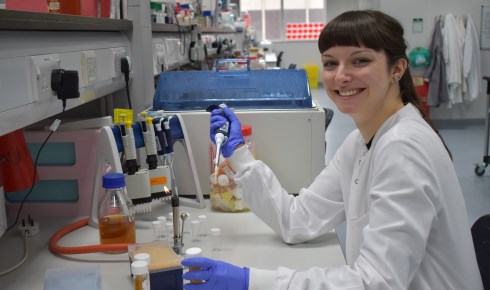 PhD student Adrienne Adele Cox is currently staying in a hotel while doing night shifts in a COVID testing lab
PhD student Adrienne Adele Cox is currently staying in a hotel while doing night shifts in a COVID testing lab“My first advice to everyone in my team and my collaborators was to carefully consider their own mental state and address any anxiety they may experience,” says Professor Sophien Kamoun, group leader at the Sainsbury Laboratory.“The second advice is to revisit objectives and expectations. I advised my team to have a plan. What are your revised goals? How realistic are they? What would it take to achieve them?”
All being unequal
Despite my best efforts, the responses and comment I received as part of my reporting were disproportionately from male researchers, something echoed across COVID-19 coverage in the press more broadly. “Negligible number of submissions to the journal from women in the last month. Never seen anything like it,” journal editor Elizabeth Hannon wrote on Twitter.
There are likely a range of systemic reasons for this, but there is concern that female researchers are being disproportionately affected by the move to home working on top of these. There is also a concern that while those in specialties directly relevant to the COVID-19 outbreak are busy with emergency responses, researchers in more distant and less useful fields have more time to write large COVID-19 grant applications.
There are signs funders are starting to respond to some of the immediate issues facing researchers unable to get into their laboratories. The UKRI and Wellcome have announced extensions in funding for PhD students and other grants. REF submission has been delayed, with signals that the disruptions will be taken into account in a modified framework.
The sector will need far more support than this, and more nuanced policy work will be required to ensure certain groups aren’t disproportionately affected, but it is a step in the right direction.
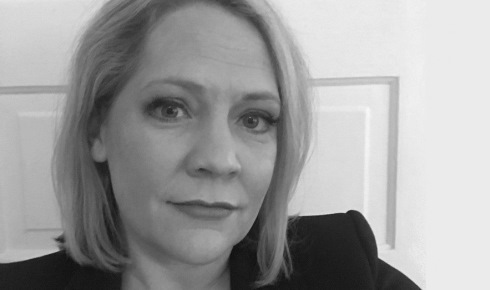 Disease outbreak specialist Dr Angela Rasmussen says she has never seen data
Disease outbreak specialist Dr Angela Rasmussen says she has never seen datacome out at such a speed and scale as it has during the COVID pandemic
Lessons to be learnt
Overall, the feeling is that the research community has pulled together in an incredible way in an unprecedented mobilisation of scientific effort. However, it’s also clear that the response on a national and global level was not always coherent, timely or evidence-based. Scientists will need to be involved in reflecting on what could be improved next time.
“Like many of my colleagues I was surprised by the Government’s initial response – there was a period of laissez-faire before robust measures were implemented,” says Kamoun. “It seemed imprudent to me that as Lombardy went into lockdown, you couldn’t take a train from Milan to Rome, but you could fly from Milan to Heathrow with absolutely no checks whatsoever upon arrival. “I was also stunned by the infamous press briefing of Thursday 12th March when the mitigation strategy of herd immunity was announced. Fortunately, the scientific community reacted strongly and I was very impressed by the broad pushback.”
Dr Elliot Bland, of Sussex-based biopharma firm Stabilitech, says he is struggling to get funding to develop a thermally stable orally administered vaccine for COVID-19 that could be posted out, helping prevent millions from having to visit a healthcare professional for injections. “When you have a situation where the shutdown is losing the economy £2.4bn per day, that doesn’t tally up with a scenario where you make only a minimal amount of funding available to a few small players. “From my perspective, I would fund all of the feasible vaccines in development, knowing that some will fall away, as is the way in clinical development. Backing one or two horses doesn’t appear to me to be the most sensible decision.”
“This is an unprecedented situation, unplanned and chaotic,” wrote Sir Paul Nurse, director of the Francis Crick Institute. “The science sector has pulled together quickly and openly, which has been impressive to see. Once the pandemic is over it will be vital to come together to see what worked well, what went wrong and how it could be improved. But for now everyone must focus on the challenge at hand.”
“The time will come for frank and serious debate, involving all stakeholders and the general public, to identify oversight, indifference, mistakes and lack of funds,” says Berger. “But now is not the time for such deliberations. Now is the time for a supreme effort by everybody and all, at work, at home, to bring to bear all we can muster, to stem the tide and defeat this crisis.”
Tom Ireland MRSB is editor of The Biologist and head of publications at the Royal Society of Biology.
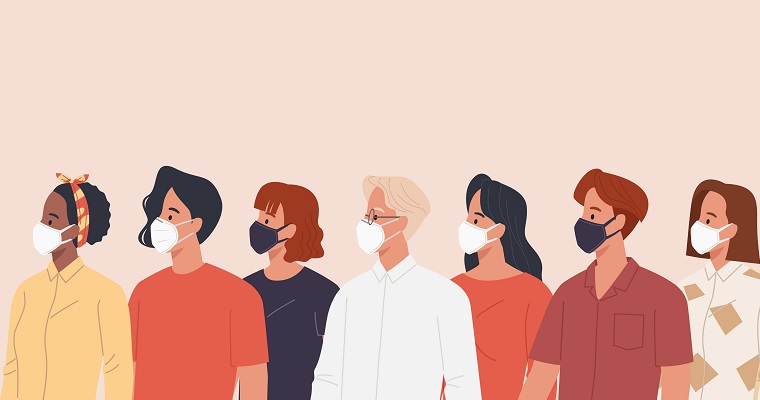 The Society has launched a survey to understand the impact the crisis is having on bioscience research. To find this and more COVID-19 resources, including ways you can help, visit the RSB's dedicated COVID-19 pages.
The Society has launched a survey to understand the impact the crisis is having on bioscience research. To find this and more COVID-19 resources, including ways you can help, visit the RSB's dedicated COVID-19 pages.

